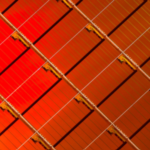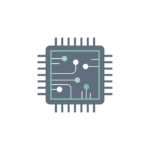The size and shape of PCB designs have significantly changed as a result of advancements in chip technology. These modifications have increased demand exponentially for maximum performance in a small package, challenging the established PCB design processes. Making critical choices in a variety of areas during the circuit design process is necessary to determine how to effectively utilize the space available for layout. The quality of the product will be significantly impacted by these choices during the course of its existence. Hence, one of the key aspects of PCB technology that greatly enhance design value is PCB routing limitations. Miniaturization is therefore pervasive across all industries and presents fresh design difficulties for engineers tasked with integrating solutions into spatially limited designs. So, while addressing the issues of space limitations, the designer should make sure that there should be no compromise in the required output of the electrical circuit and PCBs.
PCB Design and Outlining
One of the earliest and most crucial tasks in constructing a PCB design is circuit board outlining. The PCB outline reflects the final mechanical shape of the board to be built, so it is crucial to generate an abstract outline drawing that includes the PCB areas with height/width restrictions, components utilized in the circuitry, and the number of lines employed. Cut-outs: In order to precisely depict the cut-precise out’s size and shape, accurate design must be made in the mechanical layer. Throughout this process, it’s important to pay attention to the proper dimensions and any unique electrical tolerances. The cut-precise out’s outline can first be drawn by the designer using a thin line (0.50 mm wide), with the line’s center serving as a representation. Interior Cut-Out Corners: The interior corner must have a minimum radius of 1.00mm, hence the cut-out must be machined with a 2.00mm tool. A smaller radius may be required, in which case the mechanical layer must be modified. A PCB slot is a hole in a circuit board that is too large to be produced using conventional drilling techniques. To reflect the precise length and width of the slot as well as their tolerances, they should be correctly created in the mechanical layer. The two primary categories of slots are:
- Plated Slots: During PCB production, copper plating is used to create plated slots. Plated slots are used to describe PCB slots that have copper on the bottom and top.
- Non-plated slots have a hole that is larger than the copper size of the pad. As the manufacturer drills the non-plated following the electroless copper process, there are pad overlays in the non-plated slots.

PCB Routing Restrictions
Due to the complexity of electrical circuits increasing, PCB routing has recently become a significant concern. A PCB is designed and produced using a variety of principles that help the designer connect the circuit’s numerous components and facilitate the flow of data from those various circuit components to the desired output. These guidelines are used to ensure the greatest levels of electrical performance by preventing issues during the fabrication and mass production processes. Several of the PCB routing constraint settings are shown below.
Components: The designers have a variety of restrictions that they may control, such as clearances from other parts and objects, cut-out areas of the PCB board, etc. for components like resistors, capacitors, transistors, ICs, and so on. Unless otherwise indicated, components should have a 0.25mm optimum clearance. Components need to have a 0.15mm clearance if they are smaller than 0603 inches. For the portion of the PCB that needs to be restricted to a specific area due to various electrical considerations like power levels, heat transfer, etc., constraints can be established by the designer.
Trace Width: Different circuit portions can have a varying trace width defined by the designer. Controlled impedance largely uses trace width. Extra-large widths are required for routing traces in power-varying situations, and RF designs require often changing widths.

Trace routing: Boards need a finer level of control on the trace’s routing in addition to the fundamental width and clearance. The length of one trace can be matched to another trace via serpentine routing, which can also contain the minimum and maximum lengths for a trace. To ensure that the PCB adheres to a specific pattern, such as T- topology, topology restrictions can also be implemented.

Planes: With regulations that permit connections between power and ground planes, proper thermal relief can be guaranteed. Along with its various patterns, a minimal number of metal widths may be permitted in the plane. The benefits of traveling by plane include:
- Increase in circuit decoupling: The surface of a plane can function as a parallel plate decoupling capacitor between the insulating layer and ground, which is beneficial in preventing noise propagation through the power supply to various circuit components;
- Short return routes: Shorter return paths provide greater electromagnetic compatibility (EMC) because it is simpler to follow a via from the signal layer to the power plane and from the power plane to the circuit’s power source;
- More capacity for power: Compared to traces or tracks, planes have a higher capacity for current carrying, which lowers the operating temperature of the PCB.
High-Density Interconnect (HDI)
High-Density Interconnect, a technique that aids in the creation of small, light-weight, and compact PCBs, is referred to as HDI in the field of PCBs. Electronic devices are becoming increasingly tiny and small in the modern environment. Within those tiny devices, complicated computations are being performed locally. Using multi-layered PCBs created using the standard procedure will result in issues like crosstalk, poor signal integrity, etc. in such situations. The HDI technology seen in small and compact devices can address these problems.
Why HDI?
The primary distinction between conventional PCBs and PCBs produced with HDI technology is that HDI PCBs have a higher wiring density per surface area than conventional PCBs, enabling the creation of more compact, lighter, and more powerful electronic devices. In contrast to conventional PCBs, HDI technology uses thin materials and fewer layers in its construction, making it ideal for use in intricate tiny devices. Signal integrity is one of the main issues with HDI technology because of how closely they are packed. This problem is resolved by the use of micro vias, which, because to their small size, carry less parasitic capacitance and inductance. Micro vias are drilled with a laser since their diameter is less than 150 microns. As a result, numerous layers can be stacked on top of one another while retaining signal integrity and reducing crosstalk and noise coupling intensity.

Materials used for HDI
It is important to keep in mind that the material chosen for the substrate must have a low dielectric constant while choosing the material to make the PCB. Signals move through these boards much more quickly and the capacitive coupling between the two adjacent layers is reduced as a result of the low dielectric constant. As a result, by minimizing crosstalk between the adjacent layers, signal integrity is kept intact. Given that there are so many traces condensed into such a small space in HDI, this is very significant. Because of its inexpensive cost and advantageous thermal, chemical, and electrical qualities, epoxy ether has been utilized as the substrate most frequently. In addition, polyimide and cyanate ester resins are employed because of their low Dk (dielectric constant) and Df (dielectric loss factor) values. Due to their flexibility, thermoplastic resins like polyimide (PI) and polytetrafluoroethylene (PTFE) are also utilized in addition to these thermosetting resins.
Flexible PCB Technology
Flexible printed circuit boards (FPC) are an advancement in the growing field of PCB technology and it solves most of the problems that are caused due to space constraints in a PCB. Multiple types of wiring that are done on PCBs for several applications have been successfully replaced by the flexible printed circuit boards which reduce electrical wiring costs by almost 70%. Due to its compactness and flexibility, a high number of electrical connections and connection techniques can be successfully done using FPC’s.

Structure of a Flexible Printed Circuit Board
Flexible printed circuit boards can be classified as single, layer, double layer, or multi-layer, just like a rigid PCB. The space to pad tracing, the trace width spacing, and the via pad size are identical to those of a rigid circuit board. This occurs as a result of the flexible materials and plating method utilized to create the FPCs. A flexible printed circuit board is made up of the following components:
- Dielectric substrate film: Dielectric substrate film is the base material of the substrate film. Polyamide(PI), is the most commonly used material to make the film due to its high resistance to traction and temperature;
- Electric conductors: Electrical conductors are made of copper. They are used for making traces of the FPC;
- Adhesive material: Made of polyethylene or epoxy resin, adhesive materials are used for joining various parts of the FPCs.

Conclusion
By ensuring that the components that are placed have absolute clearance for other components, or 0.25mm, and by using proper routing constraints for the trace width, which are done in accordance with proper calculations according to various electrical parameters, some of the techniques of space constraints can be resolved. It is possible to employ planes to keep the board’s temperature under control, which will afterwards provide better power carrying capability and decoupling between circuits. In order to maintain the signal integrity of the board, HDI PCB technology ensures that the width of the tracings and vias in the PCBs made are narrow and compact. Flexible Printed Circuits are the ideal solution to the problems caused by space limitations in PCBs (FPC). They have uses in practically every other device we use on a daily basis, including laptops, smartphones, cameras, tablets, printers, and pacemakers that can be implanted inside the body.







